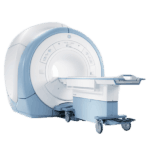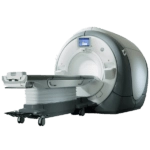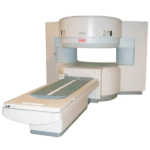Should your department consider both, superconducting and open MRI scanners?
MRI scanners have come a long way since the late 70s and the technology continues to evolve. State of the art-units have higher Tesla strengths, quicker scan times, and enhanced software for real time imaging. Open MRI scanners and Superconducting ones are the two most popular units on the market. Plus, there are many types and designs with each unit.
In this article we will cover the differences between open and superconducting MRI units, including their price points and the pros and cons.
Let’s begin with the superconducting magnet
Superconducting magnets use cooled liquid cryogens to produce strong magnetic fields measured in Tesla. Most medical institutions and imaging centers throughout the world use 1.5T to 3.0T magnetic field strength. These strong magnetic fields produce detailed images of vascular and neuro structures with speed and accuracy.
Superconducting MRI units are the gold standard for MR imaging and the most desired by Imaging departments. The image quality and the quick scan time are the biggest selling points. Certain studies, such as “real time” neuro work can only be done with a Superconducting magnet.
However, the newer MRIs have limitations.
- They’re expensive to maintain. Liquid cryogens must be replaced
- Not ideal for claustrophobic patients. These patients require sedation for the exam
- Obese patients may not fit inside the bore. Or exceed the weight limit.
- Requires strict safety protocols
Open MRI units were developed to address the above issues
Open MRI units come in various designs and models. They can accommodate all types of patients in various positions including standing, sitting and everything in between. The future designs and stronger Tesla strengths on these models will make open MRI units strong competitors in the diagnostic imaging market.
As the name implies, they are open, non-encased units that allow a clear line of vision throughout the room. Claustrophobic patients don’t have to be sedated during the exam. Obese patients can fit underneath the magnet with ease. Best of all parents can accompany their child inside the scan room during the exam without concern for safety.
Open MRI units have two large permanent magnets, one on top and one on the bottom. The patient is positioned between these magnets and images are acquired in the same manner as superconducting magnets. Their field strength is approximately ½ the strength of a superconducting magnet. Therefore, the images are not as detailed, and images take longer to acquire.
Their main advantage is that Open MRI units come in both smaller units for hands, feet, and knees etc. The larger units can scan patients in the upright and seated positions.
Get Started
Request Pricing Today!
We’re here to help! Simply fill out the form to tell us a bit about your project. We’ll contact you to set up a conversation so we can discuss how we can best meet your needs. Thank you for considering us!
Great support & services
Save time and energy
Peace of mind
Risk reduction
Should an imaging department consider purchasing both?
It really depends on three factors
- the exams performed
- budget
- and patient population
The main concern is budget, and most departments would opt for the superconducting MR unit for the superior image quality. Neuro work and vascular can only be done by Superconducting units. However, open units are improving and some of them are capable of doing more detailed work.
Imaging departments that can afford both would be able to accommodate various patient populations. These hospitals would get more referrals and in the long run increase revenue for the medical network.
To recap: here are pros and cons of open and superconducting MRI units
Open MRI units
Pros
- Cheaper to run and easier to maintain
- Ideal for claustrophobic patients
- Don’t need cryogens or supercooled liquids to operate.
- Cost less
- Easy installation
- Smaller footprint
- All patients’ shapes and sizes can be scanned
- Patient’s family members can stay in the scanning room
- Less noise and less artifacts
Cons:
- Poorer image quality
- Longer scan times due to the weaker magnetic field
- Are not suitable for neuro, vascular and real time studies.
Superconducting Magnets
Pros:
- Superior image quality
- Ideal for vascular and neurological studies.
- Image capture in real time
- Quick scan times
Cons:
- Large footprint and takes longer to install than open units
- Requires expensive shielding to prevent interference
- Strict safety protocols must be followed
- More expensive
- Claustrophobic patients need sedation or may not tolerate the examination
- Expensive cryogens have to be replaced.
- Obese patients may not fit inside the magnets board or exceed the weight limit
Price for superconducting units depends on bore size and Tesla strength. And the price point for open units depends on magnet size and model. Extremity units vs. upright etc.
Sources:
https://www.independentimaging.com/open-mri-vs-closed-mri-difference-one-best-suited/
https://mifimaging.com/2018/05/23/open-mri-what-you-need-to-know/



